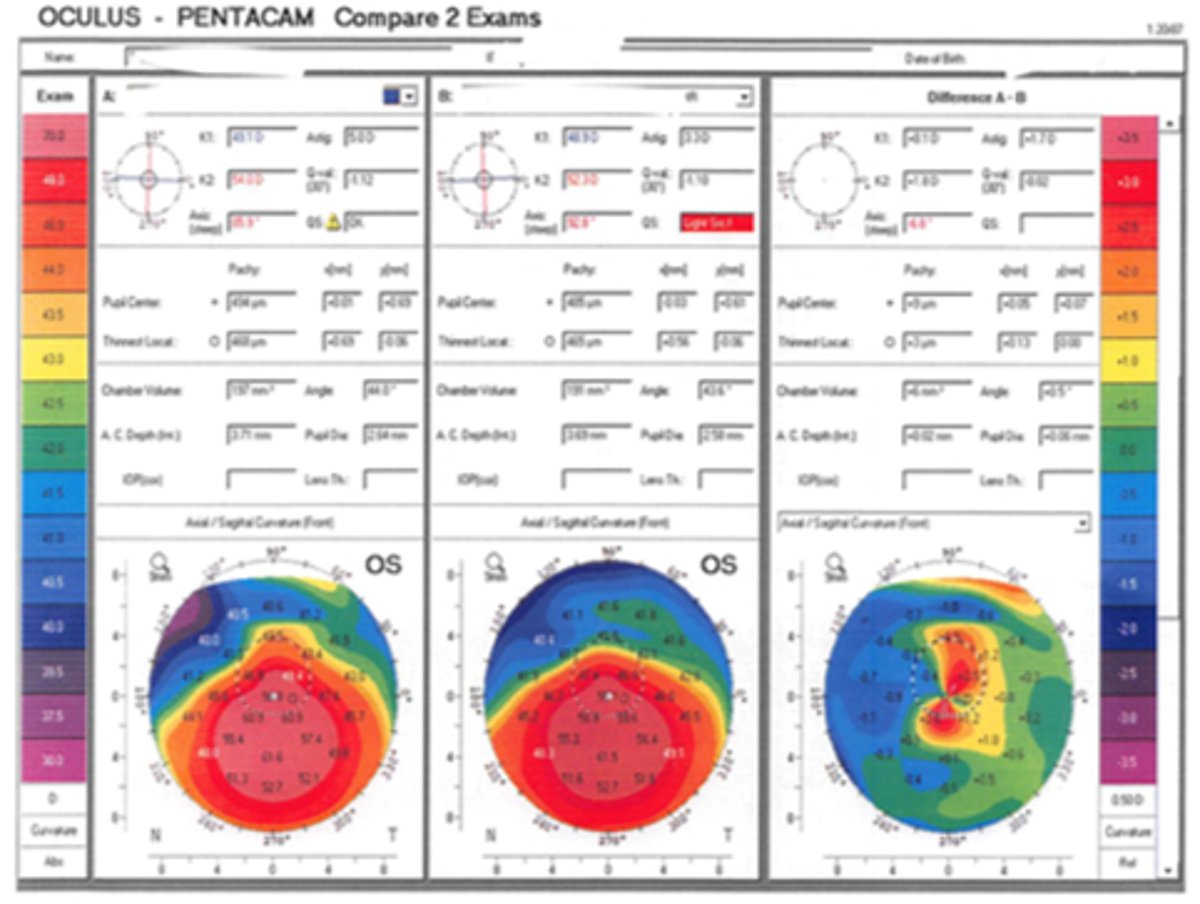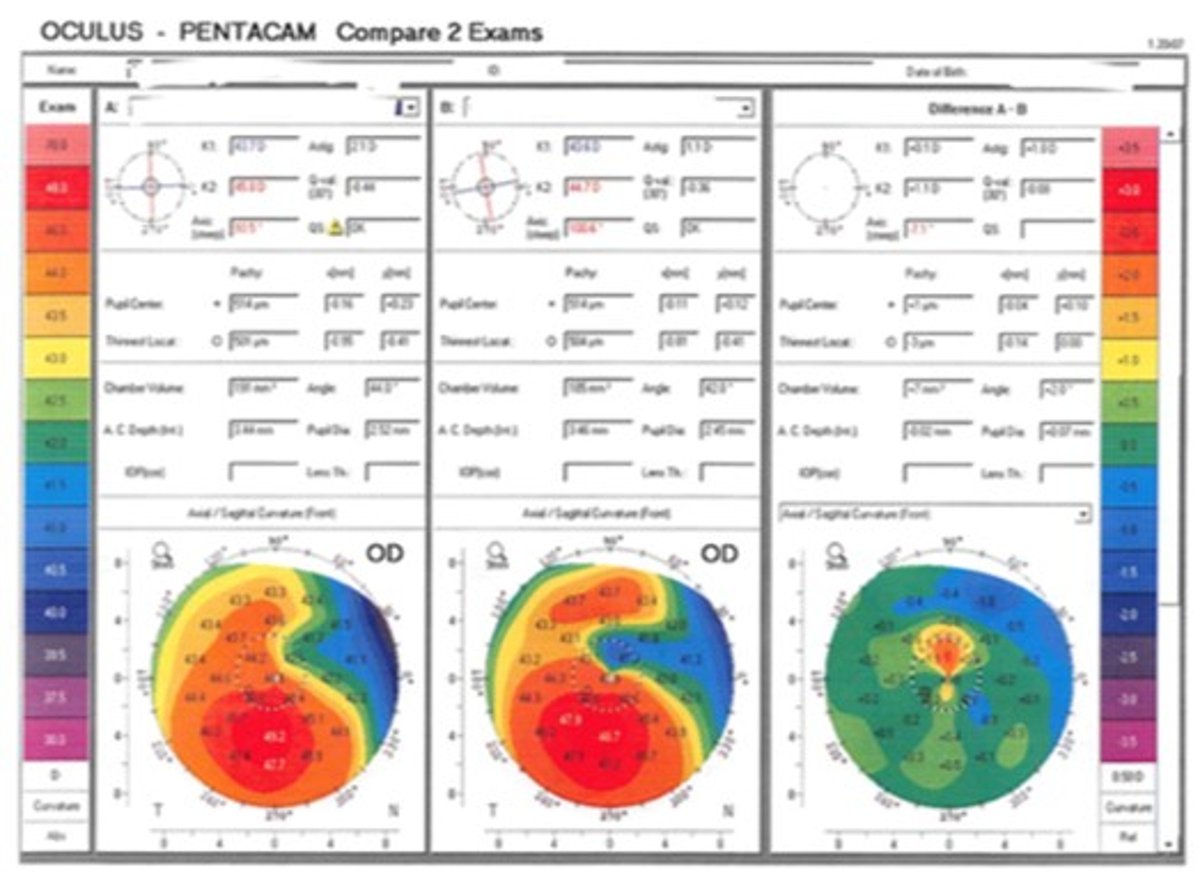BLOG: Re-treatment of keratoconus: A rarity?
Key takeaways:
- Keratoconus progression leading to re-treatment or corneal transplantation after cross-linking is rare.
- The patient’s epithelium, keratometry, topography, refractive error and vision should be evaluated.
Long-term observational studies have shown excellent efficacy of corneal collagen cross-linking, particularly for the epithelium-off procedure known as the “Dresden protocol.”
For example, Knutsson and colleagues recently reported that only five of 610 cross-linked eyes followed for 3 years, or 0.82%, continued to progress after cross-linking. And at the 2023 American Society of Cataract and Refractive Surgery meeting, Steven Greenstein, MD, presented 10-year follow-up data on 29 eyes treated in the pivotal clinical trial that led to the approval of the iLink system (Glaukos) used to perform cross-linking in the U.S. He and his colleagues found that all the keratoconic eyes that underwent cross-linking had stable visual acuity (defined as loss of less than two lines of best corrected visual acuity) 10 years after cross-linking, and 86% had stable topography (defined as less than 2 D of steepening of maximum keratometry and 95% confidence of no progression of the anterior or posterior curvature on the Pentacam’s ABCD Belin display). There was more variability among the eyes with post-refractive ectasia. There was no difference between eyes that underwent only cross-linking and those that had cross-linking plus a subsequent topography-guided procedure for refractive correction after the pivotal trial.

In some techniques or protocols used outside the U.S., higher rates of progression leading to the need for re-treatment have been reported. For example, one recent study found that one-third of patients undergoing transepithelial or epithelium-on treatment required re-treatment.
In my personal experience, progression leading to either re-treatment or corneal transplantation after cross-linking is rare, occurring less than 1% of the time. I have performed approximately 800 cross-linking procedures. Of those, fewer than 10 have been re-treatments, and I’ve never performed a third cross-linking treatment on a patient. In most cases, patients who go on to need a corneal transplant after cross-linking are typically those who already had advanced keratoconus and the cross-linking was performed in a last-ditch attempt to stabilize the cornea to avoid a transplant.
Re-treatments are most likely to be needed in patients who reached an advanced stage of keratoconus at a young age. However, we do want to make sure that all cross-linked patients understand that regular follow-up over time is important to ensure they aren’t among that small minority of patients who continue to progress.
Identifying progression after cross-linking
It can actually be quite challenging to recognize true progression after cross-linking because the parameters that help diagnose keratoconus in the first place are not as valid after cross-linking. For example, it is not uncommon to see a patient whose vision is stable or improved after cross-linking, but the maximum keratometry (Kmax) appears to be steeper (Figure 1). Is that patient progressing? More than likely, they are not, but we cannot tell from Kmax alone. Corneal remodeling continues throughout the first year after treatment and perhaps even longer. During that time, steep areas of the cornea are flattening and flatter areas are steepening (Figure 2), making topography and Kmax less reliable indicators of progression than they are in an untreated eye.


It is important to evaluate the patient holistically to understand what is happening to their epithelium, keratometry, topography, refractive error and vision. Tools that can be helpful in evaluating patients after cross-linking include Pentacam (Oculus) difference maps and epithelial mapping. The difference map subtracts the current visit from the last visit and shows only the areas of change. While the Kmax may not have changed exactly as I expected, the difference map may reveal that the overall shape of the cornea has improved. Particularly when that is combined with patient reports of better visual quality, you can feel confident there is no progression.
At the same time that the cornea is changing, the epithelium is also remodeling after removal for cross-linking. The epithelium often grows back in a “heaped-up” fashion over the area of the cone. This will thin out to a normal epithelial layer over time but can be quite thick initially, masquerading as corneal steepening. Epithelial mapping often helps me make decisions about what is truly happening. Finally, it is important to consider other coexisting conditions the patient may have. If they have dry eyes or recently wore contact lenses, that can dramatically skew the topography.
Progression and re-treatments after cross-linking are rare, but patients should be monitored to ensure that rare cases are caught in a timely fashion.
References:
- Godefrooij DA, et al. Cornea. 2020;doi:10.1097/ICO.0000000000002168.
- Greenstein S, et al. 10-year followup for collagen cross-linking and keratoconus ectasia: Comparison of outcomes with subsequent topography-altering surgery. Presented at: American Society of Cataract and Refractive Surgery meeting; May 5-8, 2023; San Diego.
- Knutsson KA, et al. Med Sci (Basel). 2023;doi:10.3390/medsci11020043/.
Collapse
